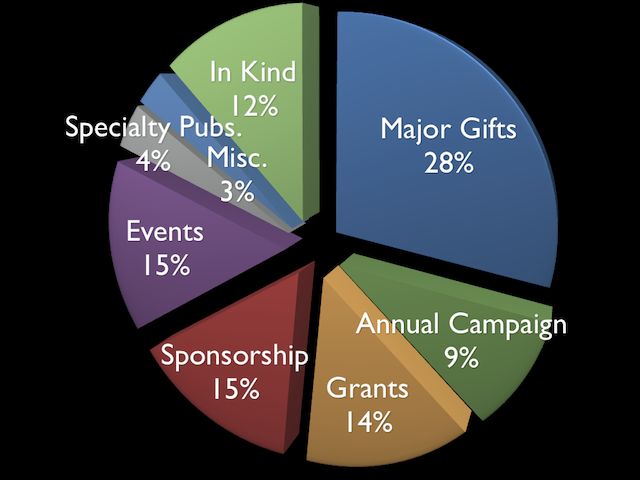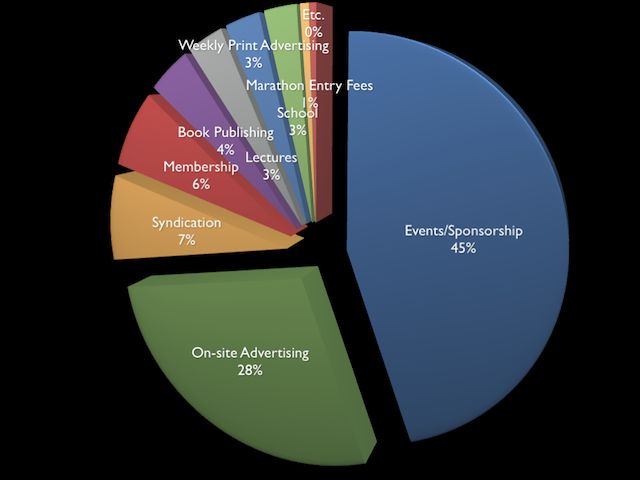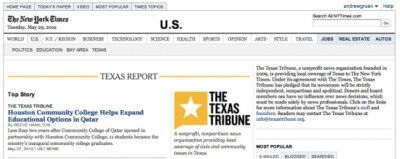Andrew Gruen [2008] is doing a PhD in Social and Political Science with the support of a Gates Cambridge scholarship.
Many felt the financial crisis of 2008 would bring a final death to mainstream news enterprises in developed media markets. They feared this would leave citizens in the hands of "pajama"-clad bloggers. "The Internet" was a threat to accountability journalism and its outcomes, which so many of us valued as integral to democracy.
Except the story didn't play out that way.
Today, innovation in news is everywhere. There is a small cohort of born-digital news enterprises that built viable organisations and are doing instantly recognisable accountability journalism.
As a former technology reporter, current media scholar and perpetual citizen, I was desperate to know how these few enterprises did it.
To find out, the Gates Scholarship gave me the opportunity to systematically study three born-digital news enterprises. So far, I have spent six months at The Texas Tribune and OhmyNews (Korean) (Short english translation). The Texas Tribune is a three-year-old non-profit organisation based in Austin, Texas; and OhmyNews, which started in 2000 and is run out of the Digital Media City complex in Seoul, South Korea, is the world's largest citizen journalism organisation. Both are digital natives and produce high-quality accountability journalism.
Modern Viability
In Austin and Seoul I found a potential model of viability for future news enterprises. The Texas Tribune and OhmyNews rely on the reduced costs of digital distribution, "revenue promiscuity" to develop monetary resources and a specific set of non-monetary assets that enhance both their editorial products and incomes.
Digital Costs Less
To understand the cost savings made possible by building content for the Web, I started by examining the costs of a typical American newspaper in 2010*:

Average costs for U.S. Newspapers in 2010
Taking dead trees out of the equation (an approximation below) is obviously appealing. The cost of producing news is actually far less than making newspapers.

Removing paper production costs would also reduce the total General and Administrative expenses (red).
"Revenue Promiscuity" - Monetary Resources
While it takes far less capital to run a web-based organisation, it still requires significant resources, and the traditional revenue sources of advertising and subscription alone are inadequate.
Evan Smith, CEO and Editor-in-Chief of The Texas Tribune, taught me a critical lesson on my first day in Texas: "revenue promiscuity". The Tribune is constantly working to increase its number of revenue streams. It counted eight sources in 2011 - with both an increase in income of 180 percent and a reduction in dependence on major gifts from the previous year.

The Texas Tribune Revenue, FY 2011
Oh Yeon-ho, the founder and CEO of OhmyNews, offered no such catchy phrase. But its 2011 revenue streams revealed a similar picture: multiplicity. Year over year, OhmyNews grew revenues by about 15 percent and it launched two new paid-content projects (lectures and entertainment news).

OhmyNews Revenue, FY 2011
Non-monetary Resources
Born-digital enterprises draw revenue from many sources, and are utilising resources that are not purchasable. A global scan, done with John Lavine and Owen Youngman, revealed non-monetary resources used by the best news enterprises globally:
- Trust, transparency, a strong brand
- Working with competitors & partners
- Change-embracing culture
- Deep audience understanding
- Impactful marketing
- Strong experiences, engagement
- Convenience and ease of use
- High user value and satisfaction
- Professional development
I found both The Texas Tribune and OhmyNews put these resources to maximum use. Two of the most important were the personal brands of the founding leaders and the enterprises' partnership strategies.
Rockstars: Leadership's Personal Brand
The strong personal brands of Evan Smith and Oh Yeon-ho are the most obvious non-monetary resources. Their leader's brands - large followings in their own right - give these enterprises instant credibility and visibility. This lets both enterprises hire the best talent, raise funds, solicit in-kind donations, gain access to sources, instantly market content to interested users, and, in the case of Oh Yeon-ho, even sell journalism courses.
Make Love in the Morning, Compete in the Afternoon: Partnerships
Equally important as their leadership, both The Texas Tribune and OhmyNews prospect for partnerships with competitors. The most valuable for The Tribune is that with The New York Times. The Tribune produces content for The Times, and in exchange it receives both a payment and huge non-monetary gains including enhanced marketing muscle, and credibility with sources.

The Texas Tribune marketed by The New York Times
While the strategy at OhmyNews is less developed, partnerships are still clearly present. The core partners are other politically like-minded, but primarily print-based publications (e.g. The Hankyoreh). These enterprises exchange advertising space, allowing the partners to reach more people sharing similar views.
We're Still Swimming!
To mercilessly butcher Twain: the reports of accountability journalism's death have been greatly exaggerated. These cases suggest that while the precise future is unclear, a map is emerging. Born-digital, accountability journalism-producing enterprises are spending less, making money from a larger variety of sources, and collecting and deploying non-monetary resources to great journalistic effect.
*See the Inland Cost and Revenue Survey data, available from the Inland Press Institute.
